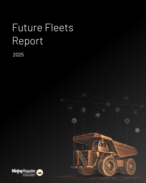Such comparisons also generally gloss over challenges such as the intermittency of renewable energy technologies, particularly wind and solar technologies. Because of the intermittency of wind, the percentage of the installed wind generation capacity that is actually available on average in Australia is just 25% to 40%, it said.
Unlike other commodities, electricity cannot be stored economically so production must match consumption on a real-time basis.
This explains why gas currently produces 12% of output but has 26% of total NEM generation capacity, renewables produce about 7% of output but comprise 16% of capacity, and coal produces 78% of output but comprises about 56% of capacity, according to the ACA.
“There are no easy solutions when it comes to developing a low-emissions future,” it said.
“Currently, base load electricity options in Australia are restricted to coal, gas and hydro. Nuclear is currently not a policy option in Australia.”
The NSW Independent Pricing and Regulatory Tribunal estimates the total cost of green schemes at $316 per household in NSW, while the equivalent official estimate for Queensland is $300-$350.
The Renewable Energy Target accounts for $102 of this cost.
“While the commonwealth compensates households for cost increases arising from the carbon tax, there is no such coverage for the cost of the RET. So the introduction of renewable energies in the form of wind and rooftop solar is being subsidised by the taxpayer, whether they realise it or not,” the ACA said.
“The experience of countries around the world with renewable energy penetration above 10% is a cautionary tale for Australian policymakers and households.
“It is evident that households in economies with a high penetration of wind and solar pay significantly more for their electricity than Australian households. In particular, consumers in Germany, Spain, Denmark and Portugal pay at least twice as much for their electricity as those in Australia.”
International experience shows that regulatory requirements to increase a nation’s share of intermittent renewables – notably wind, solar and tidal power – result in relatively high retail electricity prices, according to the ACA
“This follows from the inescapable physical fact that wind, solar and tidal power are not continuously available and electricity cannot be stored at large-scale for future use,” it said.
“Since intermittent renewables by definition cannot provide a reliable supply of electricity, they must be backed up by conventional fuel sources such as coal, gas, hydro or nuclear. “
























